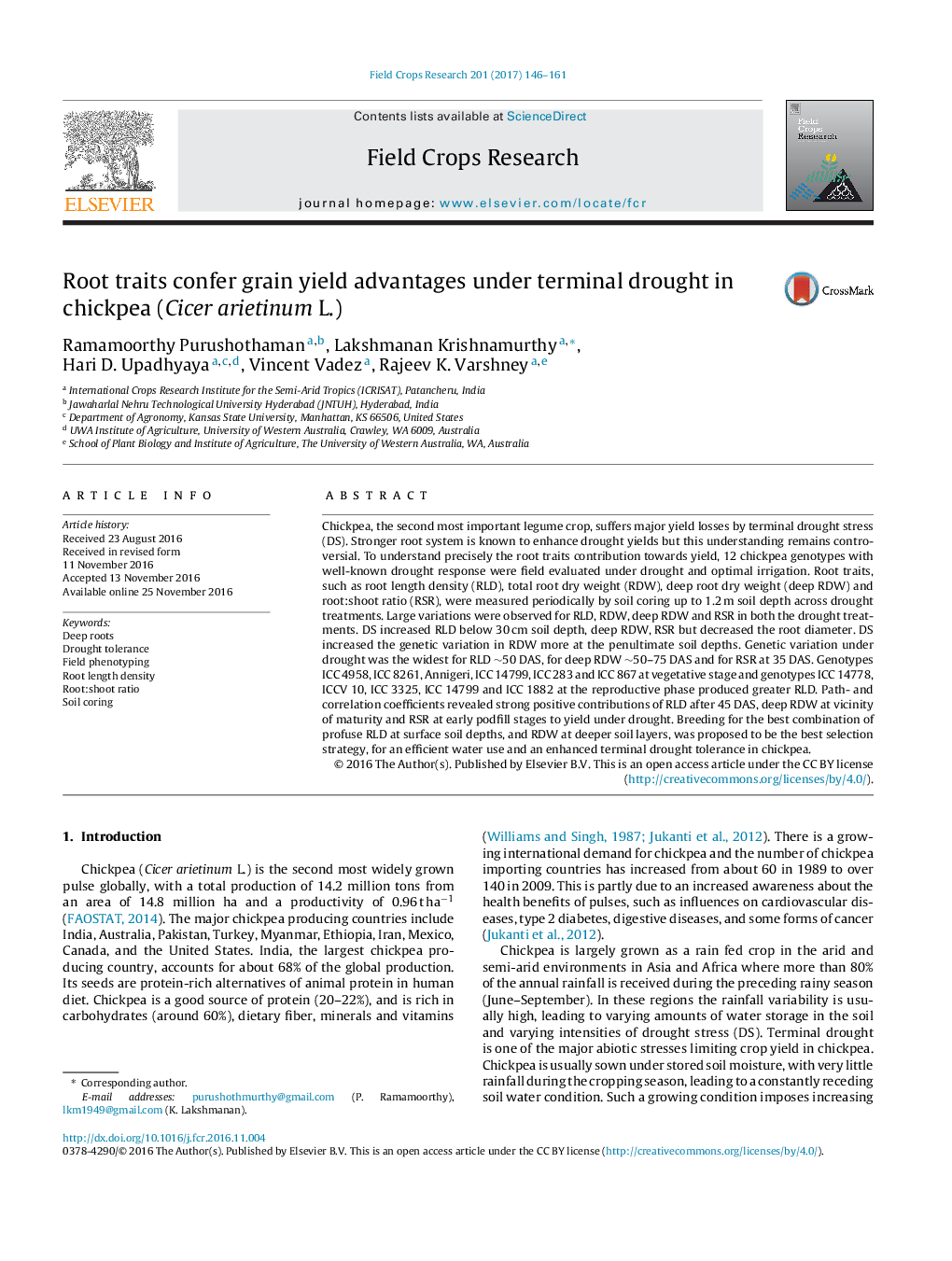| کد مقاله | کد نشریه | سال انتشار | مقاله انگلیسی | نسخه تمام متن |
|---|---|---|---|---|
| 6374344 | 1624662 | 2017 | 16 صفحه PDF | دانلود رایگان |

- Root system development transcribed the drought yields of chickpea genotypes.
- In response to drought, roots turned more prolific, thinner & penetrated deeper soils.
- Highest drought tolerance depended on the strength of reproductive-phase root system.
- RLD after 45 DAS & deep RDW before maturity & early pod-fill RSR contributed to DS.
- Tolerance relied on maximum water acquisition enhancing shoot biomass & partitioning.
Chickpea, the second most important legume crop, suffers major yield losses by terminal drought stress (DS). Stronger root system is known to enhance drought yields but this understanding remains controversial. To understand precisely the root traits contribution towards yield, 12 chickpea genotypes with well-known drought response were field evaluated under drought and optimal irrigation. Root traits, such as root length density (RLD), total root dry weight (RDW), deep root dry weight (deep RDW) and root:shoot ratio (RSR), were measured periodically by soil coring up to 1.2Â m soil depth across drought treatments. Large variations were observed for RLD, RDW, deep RDW and RSR in both the drought treatments. DS increased RLD below 30Â cm soil depth, deep RDW, RSR but decreased the root diameter. DS increased the genetic variation in RDW more at the penultimate soil depths. Genetic variation under drought was the widest for RLD â¼50 DAS, for deep RDW â¼50-75 DAS and for RSR at 35 DAS. Genotypes ICC 4958, ICC 8261, Annigeri, ICC 14799, ICC 283 and ICC 867 at vegetative stage and genotypes ICC 14778, ICCV 10, ICC 3325, ICC 14799 and ICC 1882 at the reproductive phase produced greater RLD. Path- and correlation coefficients revealed strong positive contributions of RLD after 45 DAS, deep RDW at vicinity of maturity and RSR at early podfill stages to yield under drought. Breeding for the best combination of profuse RLD at surface soil depths, and RDW at deeper soil layers, was proposed to be the best selection strategy, for an efficient water use and an enhanced terminal drought tolerance in chickpea.
Journal: Field Crops Research - Volume 201, 1 February 2017, Pages 146-161